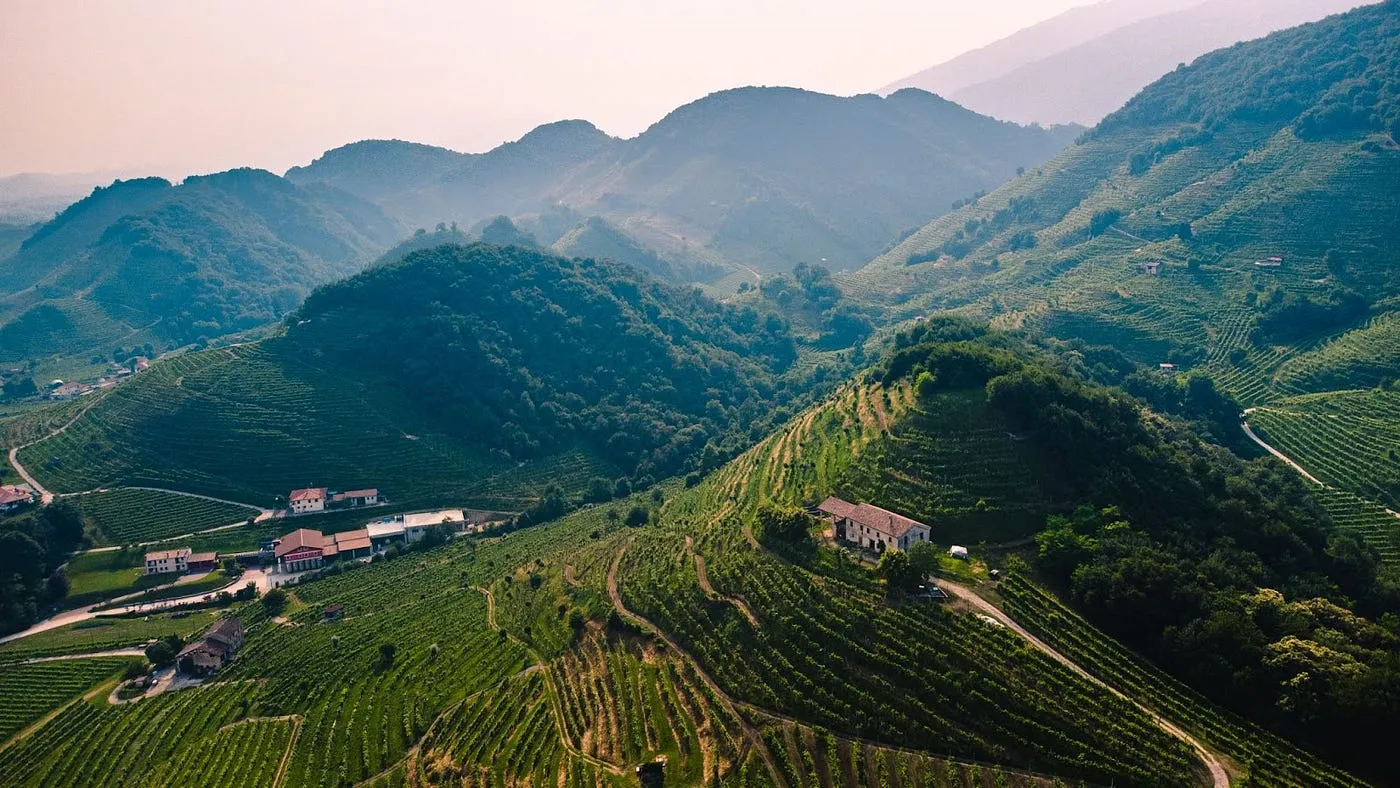- Wine Color/Type
- Top Occasions
- Unique Wines
- Surprise Me!
The Sparkling Universe of Prosecco
Let’s enjoy this beautiful day, the 13th of August 2023, the National Prosecco Day, with a glass of Prosecco.
Prosecco, a name as exquisite as the Italian wine it signifies, stirs delight in the hearts of wine aficionados across the globe. This wine, celebrated for its fruit-forward and refined profile, boasts a light body and a delicate mousse, making it a versatile choice for cocktail mixers. The spectrum of Prosecco encompasses everything from light, sparkling, dry renditions to medium-dry or sweet versions, and even extends to high-end bottle-fermented wines. This overview by Vinovoss provides a glimpse into this dazzling world of Prosecco.
One drink, nearly unlimited styles (Credit: Aleisha Kalina, unsplash.com)
Nearly unlimited Styles
Let’s begin by understanding that Prosecco isn’t merely a wine; it’s a region located in Veneto / Treviso in northeastern Italy. The wines from here consist predominantly of the local grape variety Glera, at least 85% by composition. Complementary blending partners include Chardonnay, Pinot Grigio, and Pinot Bianco, with Pinot Nero contributing to the creation of Rosé expressions.
The Glera variety lends high acidity to the wine, an attribute necessary to balance the heat of the Italian climate. Its fruity apple and pear characteristics are ideal for crafting vibrant sparkling wines. To emphasize the fruitiness, grapes are harvested early when they contain around 11% potential alcohol. This strategy ensures the grapes carry high acidity and minimal sugar before fermentation, culminating in the delightfully light wine we adore.
Following the initial fermentation, the wine is transferred into pressure tanks for a second fermentation using the “charmat method.” This process traps the bubbles, resulting in the effervescent sensation that tickles your palate after uncorking a bottle. The winemaker can then determine the wine’s duration on the lees, typically lasting about two weeks. However, some winemakers opt to let the wine rest on the fine lees for up to 60 or 90 days to enhance its creamy texture and mouthfeel. The resulting wines, classified as “Spumante,” range from dry to sweet, depending on the sugar level at the end of fermentation. It’s the winemaker’s prerogative when to stop the process.
The Prosecco producers follow a clear hierarchy. (Credit: Screenshot Prosecco.it)
Entry-level Proseccos are often infused with additional CO2 to generate lighter bubbles and lower pressure. These wines, characterized by swiftly ascending, large bubbles and a slightly acidic mouthfeel and green apple-notes, are referred to as Frizzante. While these contribute a minor portion of the production, both styles bear apple and pear fruit-forward traits.
A unique artisan style found in Prosecco is the “Sui Lieviti,” which translates to “on the lees.” Unlike its Champagne or Franciacorta counterparts, this wine is not disgorged, resulting in a cloudy appearance. Some enthusiasts affectionately call it “pet-nat.” The lees remain in the bottle, creating a sandy appearance. These wines are always Brut nature (below 3 grams of sugar per liter) and typically have an alcohol volume between 11 to 11.5%, making them a lighter Italian alternative. Their infrequency makes them a rare find, a unicorn among Proseccos. These wines usually exhibit less fruitiness, offering more of a bruised apple and herbal profile. This style is exclusively produced in the prestigious DOCG-region, adding to its scarcity. Some wines may also feature citrus and lime notes with hints of basil.
In 2020, the highly anticipated Prosecco Rosé made its debut. This DOC Vintage Wine, blended with Pinot Nero, delivers a fruity sensation with notes of strawberry, raspberry, and sour cherry. The light body and dryness harmonize with the high, crisp acidity and are well balanced with the light body and an alcohol volume of 11–11.5%. These wines are also crafted using the aforementioned charmat method and range from dry versions to a maximum of 17 g/L sugar (Extra Dry).
One region, local differences
Prosecco is produced in the general DOC and in the DOCG-Appellation Conegliano-Valdobbiadene. While the general DOC accounts for most of the production and has embraced Rosé in its category, the DOCG follows a different set of rules. The Treviso DOC region, considered superior to the DOC, is renowned for producing high-quality Proseccos, often allowing a longer resting period in the tank before bottling. The Asolo DOCG in the western part of the region produces more savoury expressions.
In the heartland of Conegliano-Valdobbiadene, the slopes and hills present a regional blend, typically labeled as Conegliano-Valdobbiadene. Its upgrade from 43 villages is called “Rive,” which can be seen as the “Premier Cru” of Proseccos. These expressions offer an elegant mouthfeel and long, juicy finishes.
The dramatic scenery is part of the Cartizze-Mountain. (Credit: Alberto Calima, unsplash.com)
The apex of the quality pyramid is the Valdobbiadene Superiore di Cartizze DOCG, more commonly known as Cartizze. Here, the steep slopes, with an inclination of up to 60°, are adorned with old vines. These vineyards are often referred to as the most expensive in the world, with costs soaring to over 1 million USD per hectare. Premium producers like Bisol or De Faveri are credited with crafting the most exceptional quality wines in the region. These sparkling wines exude a delicate intensity and light body, rendering an air of distinguished elegance on the palate. Their enduring finish offers a lingering symphony of flavors, an absolute joy for any earnest Prosecco aficionado. The pleasure they provide transcends beyond a mere tasting experience, turning each sip into a moment of pure delight.
Gastronomical adventures
Prosecco’s distinctive character makes it a versatile companion to a wide variety of cuisines. Its effervescent charm and fruity vibrancy are an excellent match for light appetizers, making it a crowd favorite at parties and receptions. Salty, creamy dishes like risotto or pasta alfredo find a delightful contrast in Prosecco’s bright acidity. Seafood enthusiasts will also appreciate the harmonious interaction between a chilled glass of Prosecco and a serving of fresh shrimp, calamari, or oysters.
The wine’s refreshing bubbles enhance the oceanic flavors, providing a gastronomic experience reminiscent of an Italian coastal getaway. For those with a sweet tooth, fear not, as Prosecco proves to be a stunning partner for desserts too. Think airy pastries, ripe berries, or even a classic Italian tiramisu. And let’s not forget about the increasingly popular Prosecco Rosé, its berry undertones echoing the flavors of light salads, grilled salmon, or a plate of antipasti.
The joy of Prosecco lies not only in the glass but in the delightful culinary journey it invites you to embark on.
Explore and find your perfect Prosecco from the diverse selection on VinoVoss.
Peter Douglas
Latest articles



